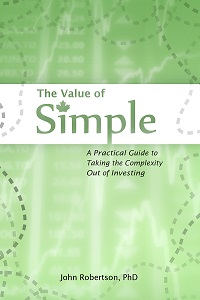DIY Root Canal vs DIY Tax Stuff
March 19th, 2018 by PotatoJason Heath pulled out a version of a quote I hate in this Ask MoneySense article on OAS clawbacks:
“Few people would think to Google how to perform a root canal, let alone try it themselves. But lots of people try DIY tax and financial advice.”
Now, it’s hyperbole, and I’m going to rant about it, but I don’t disagree with the main thrust of the article or the next part of that quote: “If you don’t have an accountant, contact one and buy an hour of their time. Bring a list of questions or send them beforehand, so you can get an income tax “check-up.†It may be well worth it even if you only do it once in your life or at least once in a while…” The last half of that paragraph, getting a check-up to have some common questions answered, is entirely reasonable and a good suggestion.
There is definitely a place for professional advice — both planners and accountants. But there’s also a place for DIY-ing things.
The tired root canal analogy makes it sound like you have to be crazy to approach your taxes on your own. But just like with dentistry or medicine, there are lots of things that are totally reasonable to DIY (or Google-then-DIY). You would not go to your dentist every time you had to brush your teeth or floss, and you shouldn’t clog up your doctor’s office with every minor cold or papercut you get, even if you would go for a root canal or surgery. If you have a canker sore it’s totally reasonable to hit Google and gargle some warm salt water. Not everything is a root canal, not everything needs a professional to manage. And especially when it comes to taxes, there are too many people in the world who shrug and say “get an accountant” rather than helping people learn to DIY (which may be related to regulations and the fear of being sued).
This particular article also really highlights an important aspect of the issue: when we’re talking about mouths, people generally have enough background information to know what is at the totally-DIY-able level (like daily brushing) and what is at the I-need-a-professional level (like fixing a cavity or getting a root canal). When it comes to finances, lots of people don’t have the basic literacy to find the answers they need or use them appropriately. Here, finding the OAS clawback threshold is pretty easy, and planning around that is a decent edge case where it’s not unreasonable to do some DIY around it, but also not exploitative to suggest it’s worth getting a professional’s input. However, the person asking the question doesn’t seem to know that the threshold is about clawbacks, not reporting — you have to report everything. So they couldn’t find the answer because they didn’t know how to ask the question (or interpret the answers they likely did turn up). There’s some essential background knowledge missing that’s going to make DIY a challenge here — indeed, to know what can be done on your own.
What then is the answer? I really don’t like a blanket “this is like a root canal and you shouldn’t do it yourself” type approach — as someone who makes tools to help people DIY stuff, that is anathema. People shouldn’t be dependent on professionals; DIYing many things shouldn’t be construed as an impossible, whack-a-doodle notion. But at the same time, there is a financial literacy gap that makes it easy to point out the challenges in implementing DIY approaches. And people shouldn’t be afraid to get some help and pay appropriately.
“Adulting” help is becoming more important and more available. Indeed, the suggestion Jason makes after the hyperbole that I took so much issue with is good — I really like the suggestion to get a few hours of a pro’s time to get questions answered well. Not “get an accountant to manage all your money stuff because you’re hopeless” but “get a block of time and ask some questions to figure this out properly.”
Of course, the analogy to medicine or dentistry really breaks down in personal finance, because our own gaps in knowledge and ability vary. It’s not as clear-cut as this thing is only for professionals, while you’re out of luck if you need help with this basic everyday thing. Especially as paying by the hour for advice is a model that’s becoming more available: no longer is it that investing is the thing you need a pro for, in part because selling an investing product is the only way for them to get paid. Now money coaches and people like Chris are there to help with things like understanding your money and building a budget, while rarefied applications like investing are completely accessible to DIY-ers.




 Questrade: use QPass 356624159378948
Questrade: use QPass 356624159378948 Passiv is a tool that can connect to your Questrade account and make it easier to track and rebalance your portfolio, including the ability to make one-click trades.
Passiv is a tool that can connect to your Questrade account and make it easier to track and rebalance your portfolio, including the ability to make one-click trades.